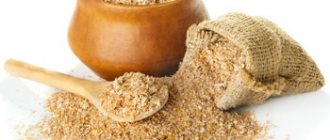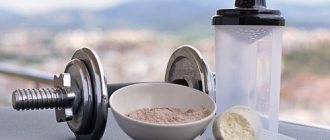In an attempt to lose weight, people resort to severe food restrictions, use dubious pills, and exhaust themselves with physical activity. All this, although it helps to get rid of excess fat, can harm your health. There is a safer remedy - casein. How to take casein for weight loss, how the supplement works and what dosages to follow - read in our material.
The benefits and harms of casein
Many of us know how healthy cottage cheese is, not realizing that this product, familiar from childhood, consists mainly of casein. Its content of useful microelements, valuable amino acids and high bioavailability make this protein indispensable in the diet of any person, not just athletes.
Among newcomers to sports, the question often arises: can casein be replaced with regular cottage cheese? Yes, you can, because these products have the same amino acid profile. But sports shakes contain about 70% protein, while cottage cheese contains only 15-18%. In addition, casein contains less fat and is easier to digest by the body.
If we talk about the dangers of casein, then we should not forget that this type of protein, like any other product, can cause allergies. And excessive consumption of cocktails can negatively affect the functioning of the kidneys and liver. Experts do not recommend drinking more than 5-6 servings per day.
Casein or slow protein
One of the types of proteins widely used by bodybuilders is calcium caseinate or casein - a complex protein that is the result of enzymatic curdling of milk. Once in the human stomach, casein forms a clot, which takes a long time to digest and provides the body with the necessary amino acids for a long time. At the same time, casein not only breaks down slowly compared to whey, it has the property of slowing down the digestion of other types of protein, has less biological value, suppresses appetite and has a less pronounced anabolic effect.
Now micellar casein is gaining popularity, which has better absorption, solubility and taste, but a higher price.
Important facts
At the beginning, we will list the key points that have been proven in independent studies (a summary of each of them is available on PubMed), in the following sections we will consider each point in more detail.
Casein for gaining muscle mass
Casein is significantly less preferable when gaining muscle mass. Buy casein when gaining weight only if you have a sufficient amount of whey. Take casein only at night. By doing so, you slow down catabolism, which means you preserve your muscles from the negative effects of cortisol. Because at night, when you are essentially left without food for 8 hours, the rate of the anabolic process in your body is systematically reduced, which means long-term anti-catabolic protection is necessary. Serving size for weight gain is 30-45 g (the serving is larger than usual, since at night it passes through the gastrointestinal tract much longer). Serving for weight loss: 15-20 g. If you have to go without food for a long time, take 30-40 g of casein, this will prevent muscle breakdown.
Casein for fat burning
Consume casein protein if eliminating hunger is important to you. If the main goal is to preserve muscle and stimulate fat breakdown, then use predominantly whey, taking casein only at night. Research suggests that casein is less effective at protecting muscles from breakdown and has a weaker thermogenic effect, but is a significantly greater appetite suppressant than other types of protein. During weight loss, a casein cocktail is drunk 2-4 times a day: in the morning, before training, before bed and in between meals. A new study has shown that whey protein combined with calcium is as beneficial as casein for weight loss.
Allergy to other types of protein
Casein protein is a long-lasting source of protein and is also great for those with allergies to whey and egg proteins.
How much should you take?
Dosage calculations are based on what other supplements you take, your weight, and the daily amount of protein you need.
Research
1. Speed of absorption
For a long time, the question remained unclear: what is better for feeding athletes involved in strength sports: casein or whey protein. In this article we will look at the differences between casein and fast protein.
Everyone knows that there are fast and slow carbohydrates. Depending on the speed at which different carbohydrate foods are digested, an indicator was created that was called the glycemic index.
French scientists, back in the middle of the last century, wondered whether this might also be true for proteins. In other words, it was necessary to find out whether the rate of protein absorption affects the body and muscle growth in particular. To resolve this issue, special experiments were carried out.
It must be said that unlike other studies, which are usually carried out on sick patients, this study was carried out on absolutely healthy volunteers, which was important for the reliability of the experiment. Indeed, in the case of a study conducted on a sick person or someone injured, it cannot be said with absolute certainty that the result will be the same for a healthy bodybuilder. That is why volunteer bodybuilders who had sufficient training experience and did not take anabolic steroids or any supplements during the experiment were selected to participate.
Volunteers who agreed to take part in the trial were divided into two groups, the first of which took whey protein, while the second group used a casein supplement. None of the subjects knew what kind of protein they were taking - whey or casein. The results clearly showed that whey protein is absorbed by the body much faster and can be classified as a fast protein. Whereas casein clearly belongs to the slow proteins, since it takes much longer to digest.
The level of amino acids in the blood of the first group reached its peak approximately 1.5 hours after taking whey protein and then declined, quickly returning to the initial level, while in the subjects in the second group and 5 hours after taking casein, the concentration of amino acids still remained at high level. The results of this study were published in the International Journal of Sports Nutrition and Exercise Metabolism. This experiment by French scientists reliably showed that casein is able to maintain a high concentration of amino acids in the blood for a long time.
2. Effect on muscle growth
West DW conducted a study in 2011 that compared the rate of muscle protein synthesis between gradually introducing whey protein and consuming the same amount once. The result showed that a single dose produced a significantly greater anabolic response.
Pennings B showed in 2011 that whey protein causes greater muscle growth in older adults compared to casein.
The work of Tang JE, Moore DR for 2009 provides evidence that stimulation of muscle growth in young people is more pronounced when consuming whey protein compared to casein. The authors suggest that this is due to differences in amino acid composition and absorption rate.
Burd NA and Yang Y in 2012 concluded that whey protein consumption maintained higher levels of muscle protein synthesis than casein after resistance training in healthy older adults.
At the same time, there is a minority of studies that did not find differences in the ability to stimulate muscle growth between whey and casein, which may be associated with inadequate study design.
3. Casein for weight loss
Dozens of studies confirm that when losing weight you need to consume protein of any kind. For the following reasons: To suppress appetite To increase thermogenesis (specific dynamic action of food) To preserve muscles
The studies listed earlier have proven that whey protein is more effective in preserving muscle and increasing thermogenesis, but casein is preferable to suppress hunger:
Abou-Samra R et al showed in 2011 that casein was a more effective appetite suppressant than other types of protein when consumed 30 minutes before meals.
It has been suggested that some of casein's weight loss benefits may be explained by its high calcium content. Tauriainen E and colleagues in 2011 studied the beneficial potential of a mixture of whey protein + calcium and casein during weight loss. The result showed that whey protein has a deeper effect on the expression of specific genes in muscles and has greater benefits for burning fat and maintaining muscle.
Which casein is better
Today, sports nutrition manufacturers produce several types of casein:
- micellar;
- calcium caseinate;
- sodium caseinate.
All these types are distinguished by the production method and the degree of purification. Caseinates are made by treating milk with acids at high temperatures and are a cheaper form of casein. The protein in such supplements is partially denatured, so the time it takes to break it down in the body is about 4-5 hours.
Micellar casein is formed during the ultrafiltration of milk, resulting in the preservation of the natural protein structure. It does not contain lactose and does not cause digestive upsets. The splitting time is 8-10 hours.
Professional athletes consider micellar casein the best for both weight loss and muscle building.
Choosing the right powder
All trainers say the same thing: it is best to buy sports supplements from reputable companies. They stand behind their product with their reputation. So, here is a list of brands you can trust:
- Gold Standard Casein from the manufacturer Optimum Nutrition. One serving contains 24 g of pure casein. This company is a leader among other analogues.
- Elite Casein by Dymatize.
- Casein from Musclepharm. The amount of protein is 80%.
- Casein Pro from Universal Nutrition. It is based on micellar casein. Available in various flavors using natural additives.
- MRM 100% has a pleasant taste (consumers note). This protein also contains micellar casein.
How to drink casein correctly for weight loss
The most effective time to take casein for weight loss is 1-2 hours before bedtime or instead of dinner. As already mentioned, casein saturates well and helps avoid evening trips to the refrigerator. And since protein is broken down over a long period of time, muscles will not lack amino acids during sleep.
You can take casein during the day, replacing one of your meals with it. In this case, the interval between training and taking the cocktail should be at least 1 hour. Otherwise, physical activity may cause discomfort in the stomach and a feeling of heaviness.
Is it possible to lose weight without sports, but regularly consuming casein? You can if you follow a calorie deficit diet. In this case, it is best to take casein instead of dinner.
Features of casein protein and differences from whey
Considering that casein can be digested for a maximum of 8 hours, it is called a slow protein. While whey protein, with a simpler molecular structure, is absorbed in 1-1.5 hours. Thus, after taking whey protein, the body receives amino acids for a shorter period of time, so whey is valuable as a fast protein for closing the protein-carbohydrate window. And long-term digestion of casein in the stomach provides the athlete’s muscles with non-essential and essential amino acids, preventing catabolism, and most importantly, preventing the breakdown of muscle fibers at night.
Taking casein during drying
The main task of cutting is to reduce the fat layer by reducing daily calories and increasing the intensity of training. However, at the same time, we need to preserve as much of our hard-earned muscle as possible.
During the diet period, the hormone cortisol predominates in the athlete’s body, which, with a lack of nutrients, destroys muscle fibers and increases blood sugar levels.
To reduce the production of cortisol as much as possible, you need to consume 2.5-3 g of protein per 1 kg of body, while eating fractionally (every 2 hours). Let's say your weight is 100 kg, it follows that in order to preserve muscles as much as possible while cutting, you need to eat 250-300 g of protein (1.2-1.3 kg of chicken fillet for example) per day. It will be quite difficult to “stuff” such an amount of chicken meat into yourself.
In difficult times of a low-carb diet, casein protein comes to our aid; it’s not for nothing that it is called anti-catabolic protein. Dilute casein with water rather than juice or milk to avoid the presence of carbohydrates at night.
Time of receipt:
- Before bed (the most important time to take);
- Between main meals (to maintain anabolism in the body).
Advantages and disadvantages
Pros:
- long-term anti-catabolic effect (about 6 hours);
- Casein is completely lactose-free, so it is an excellent source of long-lasting protein for athletes with milk allergies;
- an excellent analogue for those who cannot stand the taste of cottage cheese;
- long-lasting effect of feeling full (a good plus on a low-carb diet, when you want to eat everything in your path);
- speeds up metabolism.
Minuses:
- casein is not effective when the body needs a quick replenishment of amino acids (after training, after waking up);
- economic aspect, significantly more expensive than whey protein.
Casein protein
Before moving on to considering casein directly as a sports nutrition, you need to generally understand what kind of “beast” it is.
Casein is a complex protein that is the basis of milk, and is contained in it in the form of calcium salts (calcium caseinate). This is why casein protein is considered the best source of calcium among all existing protein shakes.
The name casein comes from the Latin word "caseus", which means "cheese". It is thanks to the milk protein casein that cheese and cottage cheese are obtained from milk.











